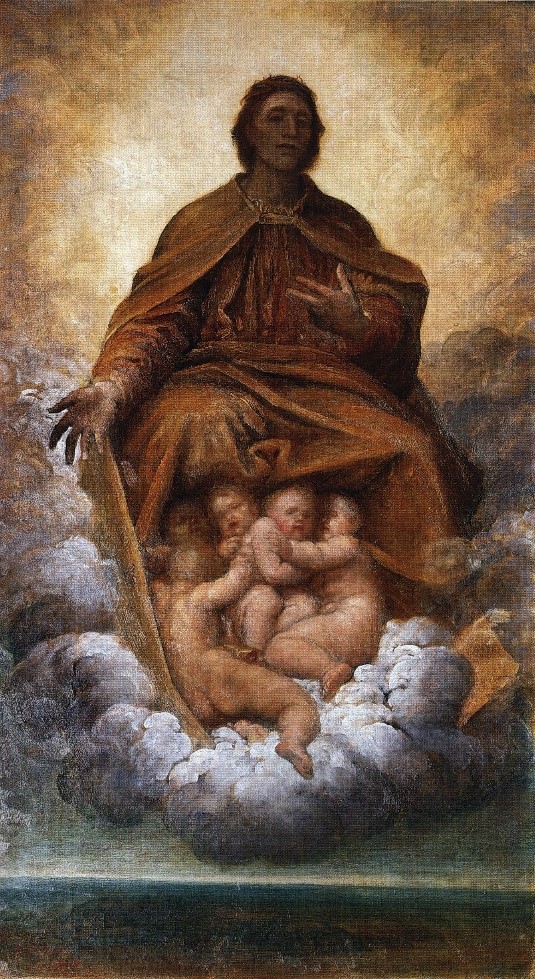"That most detestable picture": the Reception of G. F. Watts’s The Spirit of Christianity in Australasia
Keywords:
G. F. Watts, International Exhibitions, Art History, exhibition history, art criticismAbstract
George Frederick Watts’s Dedicated to all the Churches (1875), which became better known as The Spirit of Christianity, was possibly the most discussed picture shown at the New Zealand and South Seas Exhibition held in Dunedin in 1889-90. In contrast, its appearance at Melbourne’s Centennial International Exhibition (1888-90) passed with barely a comment. This paper contrasts the reception of the painting in these contexts as part of a broader investigation of the expectation that this and other British paintings that were toured to Australasia for international exhibitions would play a significant role in the education and civilisation of exhibition visitors. In particular, it considers the role of “colonial taste,” and what the reception of Watts’s painting might tell us about the understanding of “High Art” by the “enlightened” versus the “common” colonist.
References
Barlow, Paul. “The Pointless Meaningfulness of Watts’s Work.” In Trodd and Brown. 29-48.
Bills, Mark, and Barbara Bryant, eds. G. F. Watts: Victorian Visionary. Highlights from the Watts Gallery Collection. New Haven and London: Yale U P, 2008.
Blunt, Wilfred. A Biography of George Frederick Watts: “England’s Michelangelo.” London: Hamish Hamilton, 1975.
Bourdieu, Pierre. “Manet and the Institutionalization of Anomie,” in The Field of Cultural Production: Essays on Art and Literature. Cambridge: Polity, 1993.
——, Alain Darbel, and Dominique Schnapper. The Love of Art: European Art Museums and Their Public, trans. Caroline Beattie and Nick Merriman. Stanford: Stanford U P, 1990.
Bryant, Barbara Coffey. “G. F. Watts and the Symbolist Vision.” In Wilton and Upstone. 65-82.
——. “Watts, George Frederic (1817–1904).” Oxford Dictionary of National Biography. Oxford U P, 2004; online edn, May 2007. [http://www.oxforddnb.com/view/article/36781 accessed 19 May 2017].
Colonial and Indian Exhibition, London, 1886: Catalogue of New Zealand Exhibits. London: William Clowes & Sons, 1886.
“Colonial and Indian Exhibition. No. VI. The New Zealand Court. The Pictures.” New Zealand Herald, 3 Aug. 1886: 5.
Darian-Smith, Kate, Richard Gillespie, Caroline Jordan, and Elizabeth Willis, eds. Seize the Day: Exhibitions, Australia and the World. Melbourne: Monash U ePress, 2008.
“Exhibition Notes, No. XI.” Southland Times, 20 Feb. 1890: 2.
Filipova, Marta, ed. Cultures of International Exhibitions 1840-1940: Great Exhibitions in the Margins. London: Ashgate, 2015.
Fusskin, John. “Art Notes for the Use of Students.” Otago Witness, 10 April 1890: 14.
Galbally, Ann. The Collections of the National Gallery of Victoria. Melbourne: Oxford U P, 1987.
Gould, Veronica. G. F. Watts: The Last Great Victorian. New Haven & London: Yale U P, 2004.
Greenhalgh, Paul. Ephemeral Vistas: the “Expositions universelles,” Great Exhibitions and World’s Fairs, 1951-1939. Manchester: Manchester U P, 1988.
Hodgkins, William Mathew. “G. F. Watts’ Picture ‘The Spirit of Christianity’” Letter to the Editor. Otago Witness, 5 Dec. 1889: 20.
Inglis, Alison. “Aestheticism and Empire: The Grosvenor Gallery Intercolonial Exhibition in Melbourne, 1887.” In Darian-Smith et al. 16.1-16.17.
“In the Art Galleries.” Otago Daily Times, 10 Dec. 1888: 1.
Maas, Jeremy. Holman Hunt and The Light of the World. London & Berkeley: Scolar, 1984.
“Melbourne Centennial Exhibition.” Launceston Examiner, 24 Aug. 1888: 3.
Mingay, G. E., ed. The Rural Idyll. London: Routledge, 1989.
“Miscellaneous.” Otago Witness, 13 Feb. 1890: 19.
Official Record of the Centennial International Exhibition, Melbourne, 1888-1889, Melbourne: Sands & McDougall, 1890.
Rice, Rebecca. “A Red-letter Day: Evaluating Progress in New Zealand’s Art at Dunedin’s International Exhibitions 1865 and 1889.” In Filipova. 231-50.
——. “Picturing Progress in Paradise: New Zealand on Display at International Exhibitions 1873-1886.” MA in Art History, Victoria University of Wellington. 2003.
Ross, Malcolm. “The Art Gallery: No. 1–Introductory.” Otago Witness, 28 Nov. 1889: 22.
——. “The Art Gallery, No. X: New Zealand Pictures.” Otago Witness, 27 Feb. 1890: 17.
Ruskin, John. “Notes on some of the Principal Pictures exhibited in the Royal Academy 1875,” in The Complete Works of John Ruskin. Ed. E. T. Cook & A. Wedderburn. Vol. 25. London: George Allen, 1891. 169-209.
Scott, John H., Chairman of Jurors, Class XVIII, in D. Harris Hastings, ed. Official Record of the New Zealand and South Seas Exhibition Held at Dunedin, 1889-90. Wellington: Government Printer, 1891.
“The Art Collections.” Otago Witness, 1 Aug. 1889: 10.
“The British Art Collection for the Exhibition.” Argus, 9 June 1888: 5.
“The British Pictures for the Melbourne Exhibition.” The Age, 11 June 1888: 6.
“The Centennial Exhibition: Gossip of the Courts.” Australasian Supplement, 18 Aug. 1888: 1.
“The English Collection of Pictures.” The Age (Melbourne), 12 June 1888: 6.
“The Fine Art Collection at the Exhibition.” Argus, 2 Aug. 1888: 9.
“The New Zealand and South Seas Exhibition.” Otago Witness, 28 Nov. 1889: 15.
“The Week.” Otago Witness, 17 April 1890: 24.
“The Week.” Otago Witness, 5 Dec. 1889: 25.
Treble, Rosemary. “The Victorian Picture of the Country.” In Mingay. 50-60.
Trodd, Colin and Stephanie Brown, eds. Representations of G. F. Watts: Artmaking in Victorian Culture. Aldershot, Ashgate, 2004.
Troughton, Geoff. “The Light of the World at the End of the World, 1906.” Journal of New Zealand Art History, 28 (2007): 1-15.
Wheeler, Michael. “The Possibility of Watts: Religion and Spirituality in Victorian England.” In Bills and Bryant. 51-57.
Wilton, Andrew, and Robert Upstone, eds. The Age of Rossetti, Burne-Jones and Watts: Symbolism in Britain 1860-1910. London: Tate Gallery, 1997. 65-82.

Downloads
Published
Versions
- 2022-10-24 (2)
- 2022-10-19 (1)

